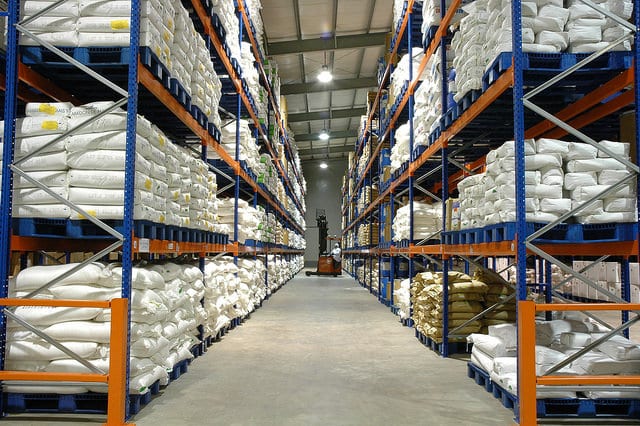Share
Author
George Anderson
Share
Your customers have one question:
“When will I get the product?”
When it comes to SAP eCommerce, customers want to know one thing: “When will I get the product?” For manufacturers with only one warehouse, this is a fairly simple question to answer. But add multiple warehouses into the mix, and you get a whole lot of complexity.
Even with multiple warehouses, everything is fine and dandy when the product is available and ready to ship immediately. But when the manufacturer has no clue, that’s an absolute nightmare—both for the customer’s immediate need, and for the customer’s future opinion of your business.
The complexity spectrum in B2B eCommerce
SAP manufacturers are constantly figuring out what products to stock and which warehouse to stock them in. They’re constantly analyzing their customers’ changing buying patterns, trying to balance availability with timeliness and efficient shipping cost. When this system of moving targets intersects with eCommerce, a great deal of complexity may be required to answer the question, “When will I get the product?”
The amount of complexity required will depend on how the manufacturer wants to answer that question. Some of our clients have only one warehouse. That simplifies the question to one dimension: is the product in stock or not? This is especially true for companies that sell highly unique products or don’t have much competition. This type of solution is fairly simple.
At the other end of the spectrum, we have clients who sell commodities. The product isn’t terribly unique, so the company competes on availability, price, and service. This type of business model requires sharing all the information with the customer: availability, which warehouse can ship the product, and shipping cost from each warehouse.
We also have clients who fall somewhere between these extremes. But at the end of the day, every client is answering the same question for their customers: “When will I get the product?”
Warehouse options: To show or not to show?
Our clients handle this question in a number of ways. One group of clients says, our customers don’t need to know where the product is coming from. In fact, we don’t want them to think that the shipping location will impact their shipping costs. Just place the order, and let the rest happen behind the scenes.
On the other end of the spectrum, we’ve had clients who said, “You know, we believe our customers want full control. We have multiple warehouses, and we want to let our customers decide which warehouse to ship from.” That means that on the website, if the user puts something in the shopping cart and the eCommerce software interrogates the manufacturer’s inventory, the shopping cart has to tell the customer where that product is available. Potentially, the same product could come from multiple warehouses.
How does SAP fit into this? What goes on behind the scenes?
First, the manufacturer needs to make a decision. What responsibility do they want to give or convey to the website user? If they don’t want the customer selecting a warehouse to ship from, how do they want to handle that in SAP? What do we tell the customer?
Adding new intelligence to SAP eCommerce: A Tale of Two Solutions
Manufacturers usually solve the multiple warehouses dilemma by saying, “Okay, you’re a West Coast customer. You have 3 items in your cart. Two are available in Los Angeles, and they’ll arrive tomorrow. The other will ship separately from New York. It will cost a lot of money.”
Manufacturers don’t ask, “Are all your items available in New York? Why not ship from there?” This might cost an extra $5 in shipping today, but it will save the customer and the manufacturer money in the long run by not requiring a second shipment from another warehouse.
That piece of intelligence is severely lacking in the SAP eCommerce world. At Corevist, we implement this type of intelligence for clients who need it.
For example, one of our clients wanted us to simulate the order using the customer’s default shipping plant. After SAP returns the order, we interrogate to see if any lines were not filled. We would take those items and re-simulate them against the next closest plant. If any items were still unavailable after the second simulation, we would pass them into a third plant to check availability. While this type of solution is extremely adaptive and provides accurate information, it can be resource-intensive. It isn’t ideal for every business.
At the other end of the spectrum, we’ve had clients who chose to handle this complexity by suppressing customer-facing information until the customer got farther down the checkout funnel. After the customer has clicked “Proceed to checkout,” this solution uses a grid that dynamically displays product availability at each warehouse. The customer can play with the order, trying different combinations of ship-from warehouses until they find a way to bundle product shipping that fits their timeline and budget. This allows the customer to quickly make an intelligent decision. It has also optimized order throughput by upwards of 50%.
Intelligence tailored to your business
Every SAP manufacturer has different needs when it comes to B2B eCommerce. At Corevist, we’re committed to understanding the complexities of your business and helping you determine how to handle multiple warehouses. If the complexity of this problem is holding you back, get in touch with us today. You’d be surprised at just how attainable SAP eCommerce is—and how easily we can tailor it to match your business processes.
Want to become Easier To Do Business With?
Check out the Corevist Platform.
Managed B2B portals and eCommerce with prebuilt integration for ECC and S/4HANA.
Ray Mannion co-authored this article.
Featured image courtesy of Bexico Pharma. Licensed under Creative Commons 2.0.









